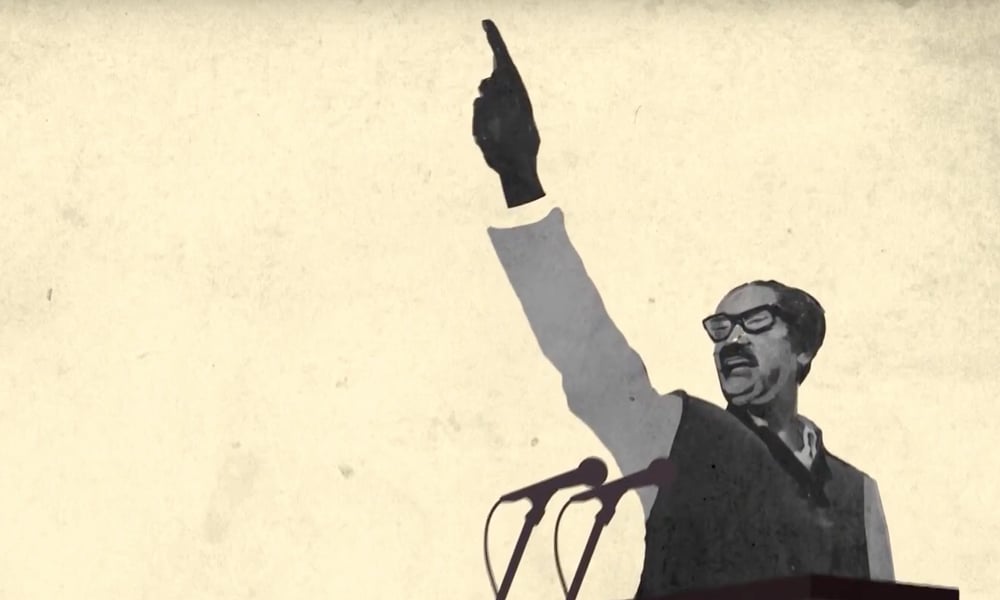2685
Published on August 28, 2022Bangladesh is being affected by ‘economic conditions elsewhere in the world’ as the country is now facing soaring prices of energy and food following the Covid-19 pandemic and Russia-Ukraine war.
These have led to energy shortages and rising import bills that are, in some cases, straining the ability of the country of 160 million people to keep up with debt payments.
These observations came at a recent article published at UK-based Financial Times titled, ”Bangladesh is being killed by economic conditions elsewhere in the world” authored jointly by Benjamin Parkin in Dhaka and John Reed in New Delhi.
The write up said regional economic crisis in south Asia has been swinging in its casualties, claiming countries whose governments pursued reckless spending policies, such as Sri Lanka, alongside model development economies.
It now threatens to reverse hard-won, generational gains made in the world’s most populous emerging market region, which sits at the geopolitical junction where Indian and Chinese interests meet. Beijing is among the leading creditors of both Sri Lanka and Pakistan — and India, which is wary of China’s influence on its smaller neighbours, is watching for signs that the crisis might allow it to strengthen its hand.
“The crisis is punishing countries with an array of different economic performances and models,” said Mark Malloch Brown, a former UN and World Bank official who now heads the George Soros-backed Open Society Foundations.
“Bangladesh, a very internationally oriented economy known for its garment sector, is getting killed by economic conditions elsewhere in the world,” added Brown.
Bangladesh had until recently been better insulated from recent economic shocks, in part because of its successful export sector. But, Prime Minister Sheikh Hasina’s government in July approached the IMF for a loan to try and shore up its foreign currency reserves and help the low-lying country build resilience against climate change.
Bangladesh is seeking about $4.5bn from the fund, and as much as $4bn more from other lenders, including the World Bank and Asian Development Bank.
In addition to raising fuel prices, Bangladesh’s government has cut school and office hours to conserve energy and introduced import restrictions on luxury goods to protect its foreign reserves.
South Asian countries share much in common with other emerging markets from Ghana and Ethiopia to Chile, where long-festering problems have been brought to a head in a year of the most acute sovereign debt crises seen since the 1980s.
Many South Asian countries are heavily dependent on imports of energy resources, such as crude oil and coal and foodstuffs, including cooking oil.
Bangladesh, for example, was forced to shut its diesel power plants in July due to import shortages. Some of these countries also owe money to China for projects pursued under Beijing’s Belt and Road Initiative, adding a layer of geopolitical risk to any coming debt workouts for regional economies in peril.
AHM Mustafa Kamal, Bangladesh’s finance minister, insists that while “everybody is under pressure”, Bangladesh is not in danger of falling into the deep financial distress of its neighbours.
“Bangladesh is in no way connected” to what is happening in countries like Sri Lanka, he said. Creditors “know our projects, know our balance sheet very well. [Bangladesh] is a good place to offer money,” he said.
Kamal highlighted the inauguration in June of the Padma Bridge, a domestically financed project near Dhaka that will drastically cut travel times for people and goods.
“Bangladesh was nowhere, not [even] on the map, as an economy,” Kamal. That has changed “through our hard work”.
The IMF said that with a debt-to-GDP ratio of 39 per cent — lower than its neighbours — Bangladesh is “not in a crisis situation”, but warns the country is vulnerable to the “huge uncertainty surrounding global economic developments”.
Yet the regional economic ructions have caused concern in India, which has itself steered clear of crisis but, as of late July, had committed $3.8bn of aid to its bankrupt neighbour, Sri Lanka, in loans and other assistance.
Malloch Brown said the experience of South Asian countries shows how the pressures on emerging markets are part of a wider “systemic crisis which really endangers the global economy”. He has called for an international policy response akin to the Marshall Plan extended to war-ruined countries after the second world war.
These strains are now resonating across the global south.
Rashed al Mahmud Titumir, an economics professor at Dhaka University, argued that the international community should step in to protect the hard-won gains of Bangladeshi workers. “You see the working class has a kind of resilience,”
“The west and the [lending] institutions should really look at that . . . it should not be allowed to free fall.” He added.
Better insulated Sri Lanka in May became the first Asia-Pacific country to default in two decades, with the economic mismanagement of President Gotabaya Rajapaksa triggering mass street protests in Colombo that forced him to flee the country on a military jet in July.
Pakistan, where authorities have charged former leader Imran Khan on terrorism offences, also appears to be entering a period of enhanced political volatility, even as it seeks to nail down financing from the IMF and bilateral creditors that would allow it to avert default.
Nepal and the Maldives are also vulnerable to the fallout from global inflation.
Following the end of British colonial rule on the Indian subcontinent in 1947, Bangladesh became a province of Pakistan, before gaining independence in 1971 after a devastating civil war that left the new country stricken by famine.
The economy made significant strides in the decades that followed. Low-skilled manufacturing took off, helped by tax breaks and duty-free access to wealthy markets, creating mass employment for women as well as men.
Overseas remittances also provided much-needed capital.
Poverty halved from 58.8 per cent in 1991 to 24.3 per cent in 2016, while education and health indicators such as literacy and infant mortality also improved. Bangladesh’s per-capita income of $2,500 is now higher than that of both India and Pakistan.
The UN plans to reclassify Bangladesh from “least developed country” to developing-country status (opens a new window) by 2026.
Since the 1980s, Bangladesh’s garment industry has grown from 4 per cent to 80 per cent of the country’s exports, which total more than $50bn, according to the country’s garments exporters association. Most employees are women.
Yet this growth has been blighted by labour exploitation and dangerous working conditions, including the collapse of the Rana Plaza factory building in 2013 that killed more than 1,000 people. Sarwer Hossain, a union leader in Ashulia, said that working conditions have since improved, but more progress is needed, with injuries and deadly accidents continuing.
The garments sector helped shield Bangladesh during the pandemic, with exports rising to a record as locked-down consumers overseas shopped for clothes online.
But it is now starting to feel the strain. The IMF warns that demand for Bangladesh’s cornerstone industry’s products will suffer due to slowing growth in major buyers in the US and European countries. “This is definitely going to affect export performance going forward,” the fund says.
The rising import bill has taken a toll on Bangladesh’s foreign reserves, which have fallen to less than $40bn, from more than $45bn last year. While this remains enough for about five months’ worth of imports, Dhaka university’s Titumir said he expects it to fall below three months’ import cover — the level economists often consider critical — by the end of the year.
He argued that the situation is laying bare “cracks in the economy”, from Bangladesh’s slowing poverty reduction to its stagnating wages and rising debt.
He said that this has “exposed the [success] story that we hear as a kind of a mirage”.
Steve Cochrane, chief Asia-Pacific economist for Moody’s Analytics, argued that because South Asian countries did not suffer as much as other regions during the 1997-98 Asian financial crisis, they were not compelled to undertake the economic reforms that would have insulated them from the worst of this year’s crisis.














